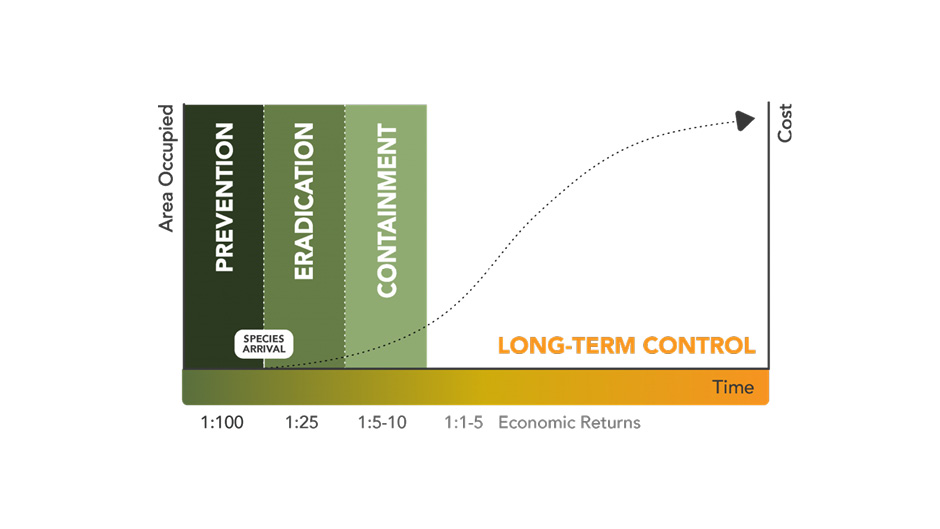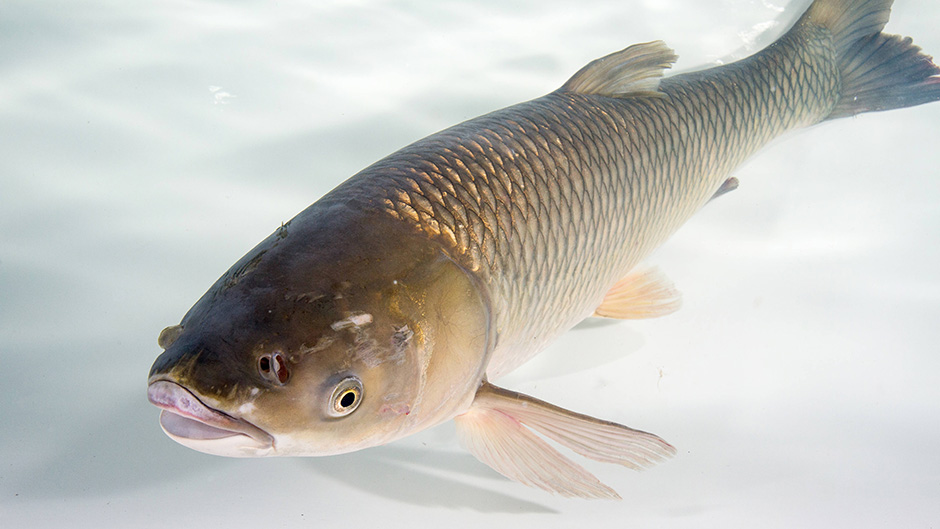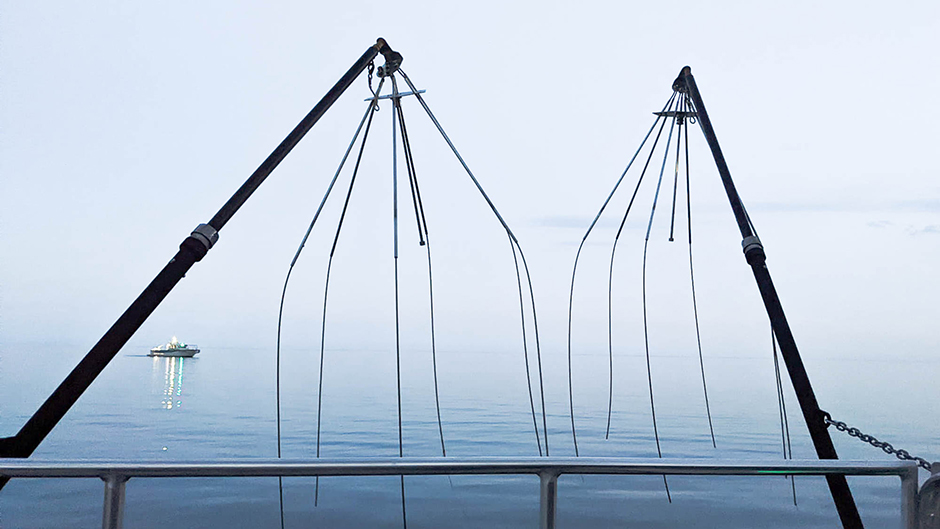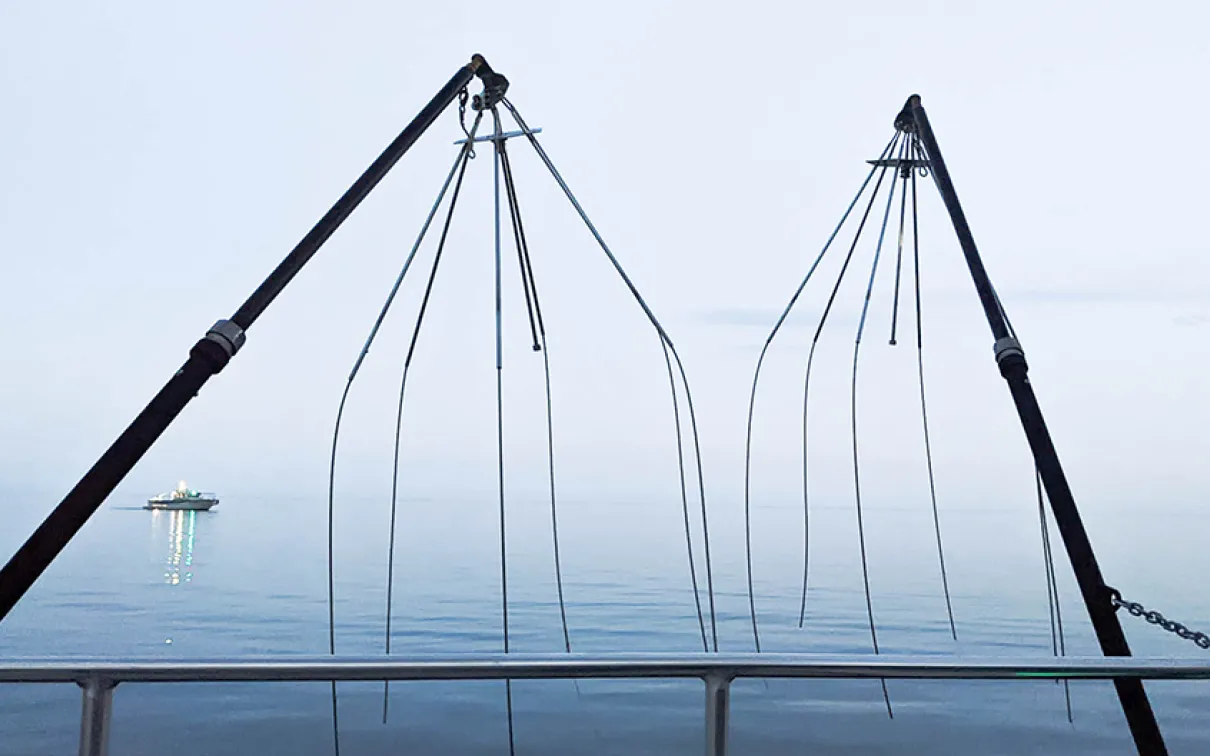Great Lakes, Great Invaders
With Grass Carp nearing Ontario’s border, how do we prevent them from invading?
Published
Categories
Author
What’s iridescent, shiny, and worth spending millions of dollars?
What’s iridescent, shiny, and worth spending millions of dollars? In this case, it's not gems or rosy-red rubies, but the Grass Carp instead.
While they may be shiny (and can grow to be around 2 metres long), Grass Carp are no trophy fish. Here in Canada, we are spending millions on preventing their invasion.
That may sound like a lot, but it is a mere fraction of the estimated $7-billion dollar fishing industry supported by the Great Lakes, which is threatened by the invasion of Grass Carp, a fish so big that they would outcompete native fishes and ruin water conditions by overfeeding.
Once they arrive, their eradication and containment over time would end up costing exponentially more than their prevention.

So how are we keeping Grass Carp out?
So how are we keeping Grass Carp out when they are so close to the border?
The Department of Fisheries and Oceans Canada (DFO) surveils the Great Lakes and surrounding watersheds annually for the presence of Grass Carp. DFO also partners with Toronto and Region Conservation Authority (TRCA), so that they can conduct surveillance in waters within the Toronto regional waterfront. The surveillance protocol DFO and TRCA use includes electrofishing and a variety of nets that target fishes in different life stages. So far, their work has yielded promising results: no Grass Carp have been found in the Toronto region over the past seven years.
While DFO is looking specifically for Grass
While DFO is looking specifically for Grass, Black, Bighead, and Silver carps, they still collect data on non-target species (identification, weight, and length). These data show what the aquatic community looks like, including species diversity and health. With this knowledge we can measure community impact should there be an invasion.
Scientists at University of Toronto
Scientists at University of Toronto are developing innovative solutions to keep out unwanted fishes using non-physical barriers, like this auditory barrier used to prevent non-native fishes from entering a conservation area in Royal Botanical Gardens.
DFO works to form partnerships with organizations like ROM to teach the public how harmful invasive species are to our native fishes and their habitats. ROM also works to help the public identify Grass Carp and their relatives, so that they can assist with early detection next time they are out on the water.
Our native ecosystems have evolved
Our native ecosystems have evolved in such a way that each species serves a purpose. Smaller fishes feed on insects and aquatic plants, preventing population explosions. Larger fishes eat smaller fishes, making sure they don’t over-consume those insects and plants. Grass Carp are larger fishes that eat the diet of those smaller fishes, foraging through wetland vegetation that once offered critical habitat for fishes, birds, amphibians, and reptiles.
Their size and novelty in our ecosystems give them the number one advantage: they have no predators—meaning they can just keep eating, and eating… and eating. Next thing you know, there is no more food or habitat for smaller native fishes, and the web crumbles—along with human structures that depend upon a functioning ecosystem.
Natural resources are critical to providing fresh water, rounded diets, and stable income. But these are not just resources we are talking about. This is our home, and just like the weeds we pull from our gardens, it is up to us to protect it—so that what is native can grow.
Do your part
Report Grass Carp sightings to the Invading Species Hotline at 1-800-563-7711, or go to EDDMapS.org.








